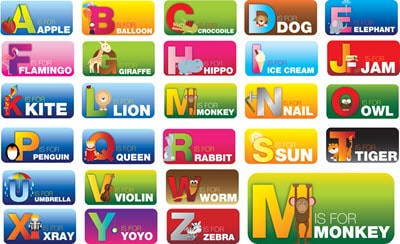It’s easy to feel helpless when your child is a . After all, you want nothing more than for your to succeed in life and feel confident in school.
Thankfully, there are many ways you can help your child become a better .
Here are 10 of the best and tips to help your child.
These are practical tips and strategies you can apply to help your overcome their struggles. We like to split them into 2 equally important parts.
- Practical things you can do to create a more conducive and appealing home environment for
- Direct
Creating the Ideal Environment
#1 Build a Nook
A nook is a quiet area designed exclusively for your .
Depending on your living space, it can be an entire room, under the stairs, in a closet, or even just a tiny corner of a room.
This special space is crucial.
It really helps make more appealing to your child because it’s essentially a safe-space your child “owns,” which they look forward to spending time in. This, in turn, leads to a more positive outlook on .
Some things to consider when building your nook:
Location is everything. The space needs to be in a quiet area, free from televisions and other distractions. It’s also ideal to choose a spot that has excellent natural lighting. If this isn’t possible, think about getting some lights.
Choose fun color schemes but remember, this is your child’s space. So it’s essential to get their input on how it’s decorated. Better yet, have your child help you with the construction. It’s an ideal opportunity to bond and create some fun memories.
Soft cushions and pillows are a great way to make the space more inviting and comfortable.
Tents and canopies are extremely popular with and work great when building a nook within a small section of a room. However, be sure there’s adequate space for an adult, so you can snuggle up with your child for sessions.
And lastly, a nook is not a nook without books. So make sure there’s plenty!
This brings us to our next tip-a variety of books.
#2 Keep a Variety of Interesting Age-Appropriate Books and Materials
There are 2 critical points to keep in mind when choosing books.
- Age appropriate
- Kids Choice (variety and choice)
Why choosing age-appropriate (or skill-appropriate) books are important
Books that are currently too advanced will end up being a frustrating experience for your child when . This negative experience can ultimately put them off .
Only books that are too easy for your child results in no challenge. Without a slight challenge, your child won’t have the opportunity to develop their further.
Books at the correct level for your child’s ability will challenge them slightly while still holding their interest. This slight challenge will steadily improve their literacy skills.
There’s a quick and easy way to find books at the correct level for your child called the 5-finger test.
Using the 5-Finger test to find appropriate books
- Choose a book, or have your child choose a book
- Turn to a random page with a decent amount of text
- Have your child read the page. Every time they get stuck and cannot read a word, have them hold up one finger.
After the entire page, if:
0 – 1 fingers are raised
The book is probably too easy
2 – 3 fingers are raised
The book may be just right for your child. Presenting a slight challenge and introducing them to new words.
4 – 5 fingers raised
The book is probably too difficult for them to read right now.
This 5-Finger test is just a guideline and something that’s not set in stone. So use your discretion. If your child’s heart is set on a book that’s too difficult, consider choosing it as a book that you can read TO your child.
Freedom of choice
Suppose you’re only choosing books based on your preferences. In that case, you’ll soon find your child losing interest and developing an attitude towards .
On the other hand, you also don’t want to leave it up to your child to choose every time.
For instance, if a boy loves dinosaurs and only reads dinosaur books, you’ll find that while he holds impressive dinosaur knowledge, he has a feeble grasp on other topics.
This is why it’s best to let your choose books they’re interested in. Every now and then, you can introduce an age-appropriate book of your choosing on another subject.
And finally, try keeping a variety of mediums (picture books, chapter books, magazines) from different authors. This will expose your children to different styles and increase their language skills.
Having this variety is an excellent way to get your child more and making it easier to establish a regular routine which we’ll discuss next.
#3 Establishing a routine
You’ve heard the saying, practice makes perfect.
This is also true for .
If your child is not often, their skills will regress.
This is why you must establish a daily routine for your child.
Not only will it improve their skills, but it will also help develop a love for .
People are creatures of habit. especially enjoy routine and look to parents to bring structure into their lives.
Your child will look forward to daily sessions, especially the ones where you’re present with them.
with your child
Although all the tips mentioned are crucial, special mention needs to be given to this one.
to your child should already start when they’re newborns. This helps them in:
- to speak
- Expanding their
- Improving their language skills
- Developing their bond with you
And if you weren’t able to read to them in their infancy, don’t worry; it’s never too late to start because you should continue to them as they get older.
When your child reads aloud to you, show a genuine interest in what they’re . Ask them questions, discuss the characters and the story.
And always use encouraging words and compliment them on a job well done.
In addition to improving their literacy, it will enhance their cognitive development and communication skills and boost their confidence.
aloud to your child and having them read to you every day is not negotiable.
This concludes our section on practical tips you can start implementing to improve your ability and develop their love for .
Now let’s look at teaching strategies for improving your child’s literacy skills.
Teaching Your Child to Be a Better Reader
In this section, we’ll look at proven strategies for teaching your child to read.
You know your child better than anybody else. So when it comes to your , you are the best .
well is not intuitive. It’s not something your child will pick up naturally as it requires explicit teaching.
And the best way to teach is using .
is undoubtedly the most effective method of teaching to read and write by helping them understand the relationship between letters, words, and their associated sounds.
You’ll find most struggling readers cannot effectively recognize the sounds of the letters they are because they lack (the ability to hear and manipulate sounds in spoken words) and .
In addition to helping your child develop a clear understanding of how the English language works, skills help them decode unfamiliar words and sound them out.
Instead of memorizing thousands of words, your child only needs to master the around 44 sounds to read.
And as they progress, these skills will play a crucial part in their .
How to teach to your ?
Worksheets and other aids are a great way to reinforce lessons and further develop skills. So too are playing I-Spy and other rhyming games.
Now obviously just playing games and activities is not enough. You also want to invest in a that you can work through with your child.
#6 Learn to Read Programs
Using programs, you can become your . However, they aren’t all the same.
Some are meant for teachers, while others are created specifically for parents with no teaching experience.
Some go over the basics, and others focus on skills at certain literacy levels.
For struggling readers, you want to use a comprehensive program covering everything from A – Z.
You also want to ensure the program helps develop your child’s . This is an essential skill required for progressing with .
Overseeing the process with your child is invaluable, as you’re able to work through all the critical components of to read. You’re also able to help rectify current problems and ensure your child has a rock-solid foundation.
We recommend the Children . However, it’s always a good idea to do your own research into a program that you feel will be best for your child.
The following tips are ways to approach each lesson of your chosen program.
#7 Short But Frequent Lessons
have really short attention spans.
So you don’t want long lessons that drag on. Your child will just get bored and allow anything and everything to distract them.
Dealing with this is simple.
- Schedule two to three lessons every day
- Keep each lesson between five and ten minutes if you have a .
This will keep your child engaged and help them retain a positive attitude when .
You can increase the length of lessons if you have an .
#8 Take it slow
There’s no reason to rush through lessons trying to cover as much ground as possible. Your child will get there eventually. It’s more important that they master every lesson. This will help them to better understand the language and build self-confidence.
So taking an incremental approach where you introduce just one new concept at a time is vital.
Allowing your child to repeat both lessons and sessions will help them:
- enhance their foundation
- Improve
- sound out unfamiliar words and improve
- Teach and spelling separately
#9 Mastering is easier than mastering spelling
For struggling readers, it’s best to teach on its own as this will allow them to progress faster through their , as they won’t have to stop and first learn to spell each word.
#10 Use the 5 senses
A great way to assist the process is in using touch, taste, smell, hearing, and movement during lessons. Otherwise known as multisensory teaching.
There you have it. 10 practical and actionable tips you can start implementing today to improve your .
Now let’s take a quick look at some of the reasons why have problems with .
Problems and difficulties associated with
As mentioned earlier, the English language is not intuitive and requires direct teaching to become a .
As a result, many problems can affect your ability. These can be caused by a , insufficient practice, poor teaching, or even developmental and disabilities.
The list below covers most of these problems.
- ADHD
- Visual impairment
- Speech and language disorders
- Limited
- Reluctant, anxious
- Issues with decoding words
- Confusion with
- Problems with sounding out words
- difficulties
- Unfamiliarity with
- Poor
- skills regressing over time
Please look out for our upcoming article, which will deal with each in greater detail.
When should you get professional help?
We recommend that every parent apply these tips and take charge of their children’s to read development before seeking the help of a .
You can read through our article on the average milestones to get a rough idea of where your child should be at their current .
However, if you suspect your child has or any other , please make an appointment with a doctor or specialist as soon as possible. Even though there’s a good chance a child with will see a dramatic improvement in their literacy using the tips above, it’s still advisable to speak to a professional.
What if I have no teaching experience?
You may be worried that you have no formal training as a , so how can you possibly help your child overcome their struggles.
This is a common concern most parents face.
In reality, though, you’ll usually find the best readers are the ones who spend time at home with their parents.
There are many benefits to holding private lessons at home.
In classroom scenarios, it’s easy for children with a to fall behind their peers or struggle with essential concepts that never get picked up.
Whereas at home, your child is the only .
Allowing you to actively monitor their progress and give them as much time as they need to master essential concepts and work through any difficulties they face. With consistency, your child will blossom into a .
There are many excellent programs available that only require you to follow the program step-by-step and have patience in working through the lessons with your child. No teaching qualifications are needed.
It’s genuinely amazing overseeing your and witnessing their breakthrough moments in overcoming their struggles. And when you keep working at it with them, you’ll see a gradual improvement in their:
- Proficiency and when
- and communication skills
A Summary of Our 10 Actionable Tips
- Build a nook
- A variety of interesting age-appropriate
- Establish a routine
- Read with your child
- Focus on
- Invest in a to read program
- Keep lessons short but frequent
- Take it slow
- Teach and spelling separately
- Use multisensory teaching
Make a note of these tips and start working through the list today.
may seem a bit overwhelming at first, but it does get easier every day. And soon, both you and your child will look forward to each session and lesson. Remember, you are your child’s best , and you’ll play an integral part in transforming your little one into a .
PS. You can learn more about the program we recommend by accessing the links below.

Natalie is a full-time blogger and former elementary school teacher who specializes in helping parents teach their kids to read. With a qualification in Early Childhood Education, over 7 years of experience in education, and a passion for literacy, Natalie provides practical tips, activities, and resources for parents looking to support their child’s learning-to-read journey. She is the proud mom of two young readers and loves sharing her knowledge and experience with other parents. Natalie enjoys spending time with her family, reading, and exploring the great outdoors when she’s not blogging.







